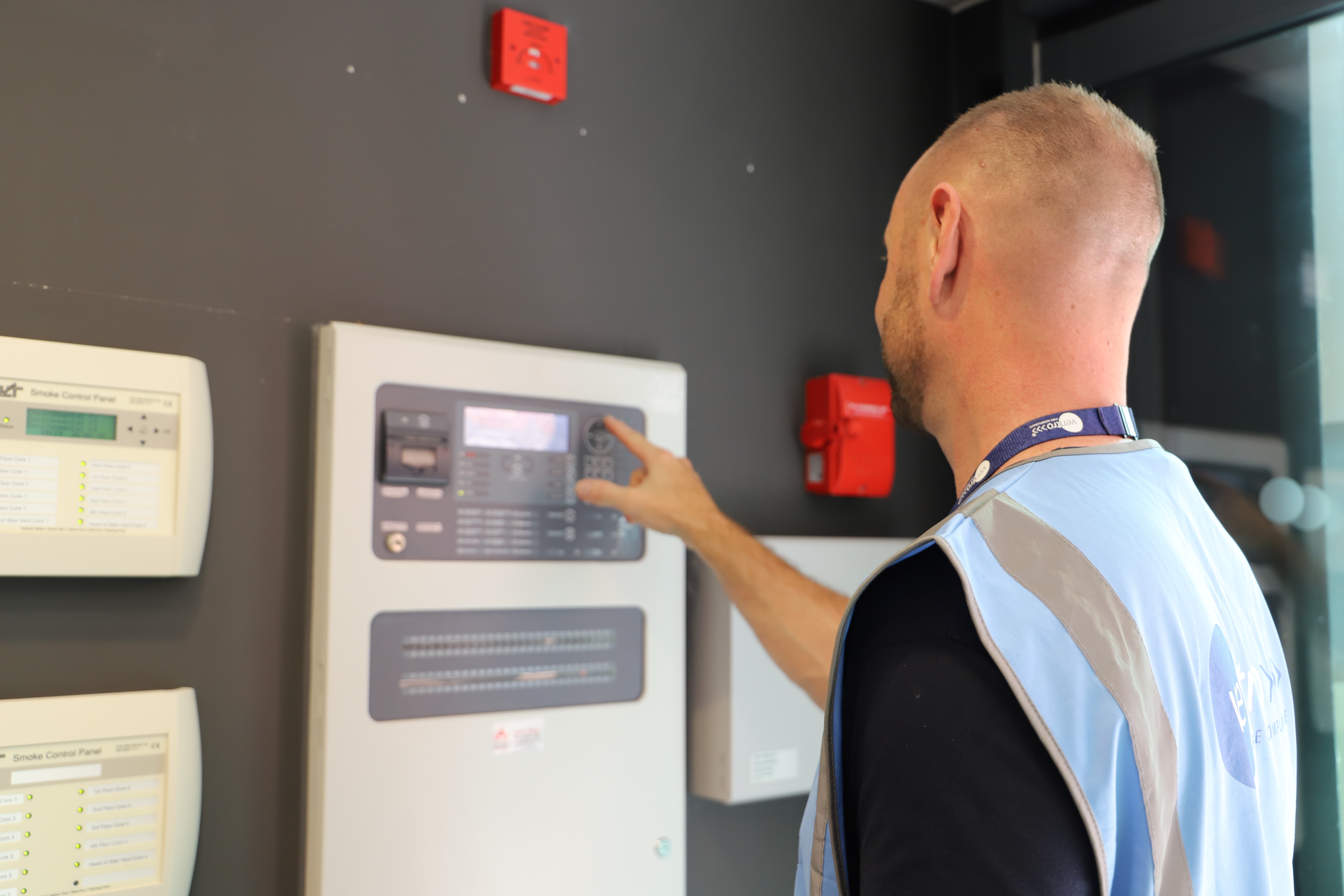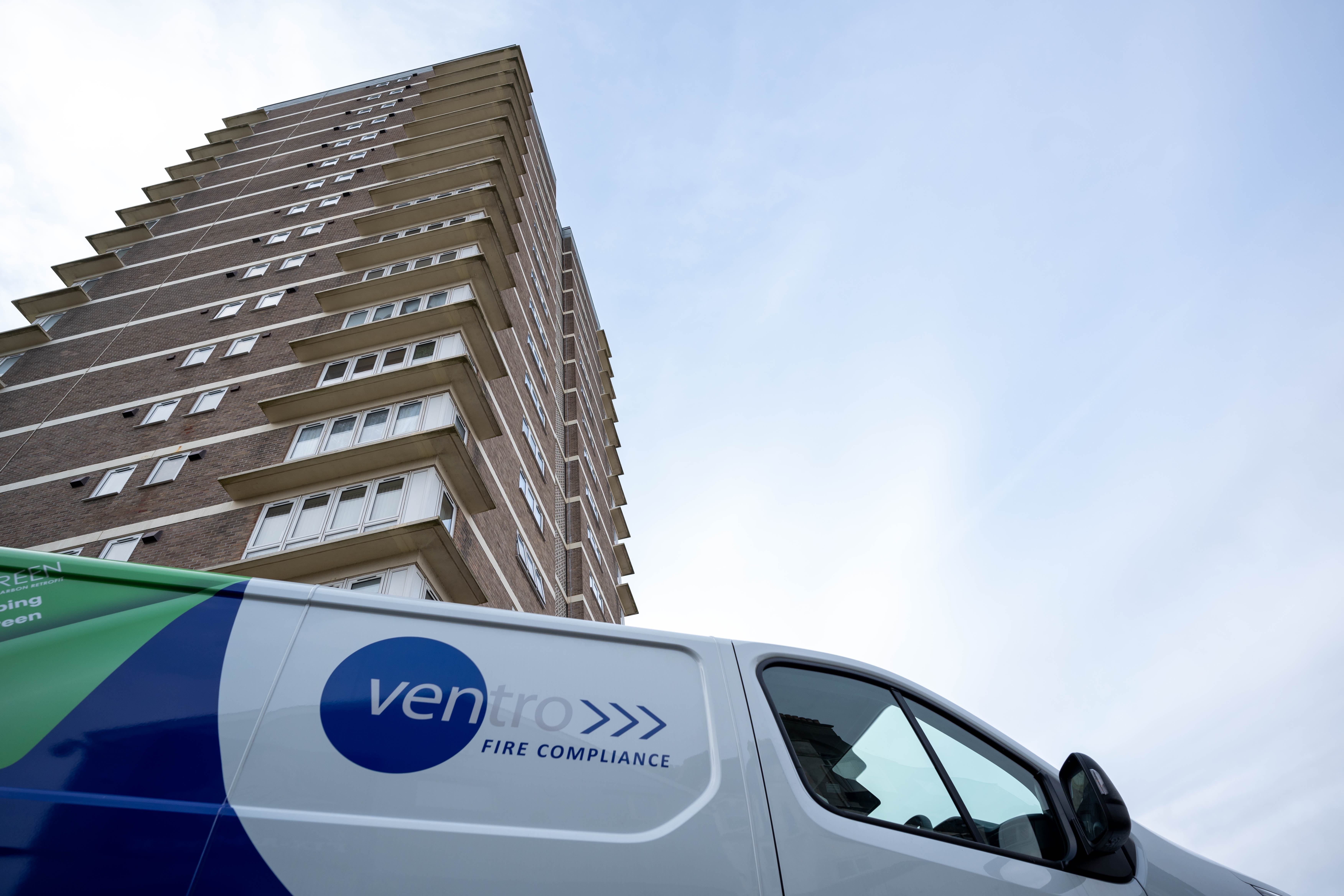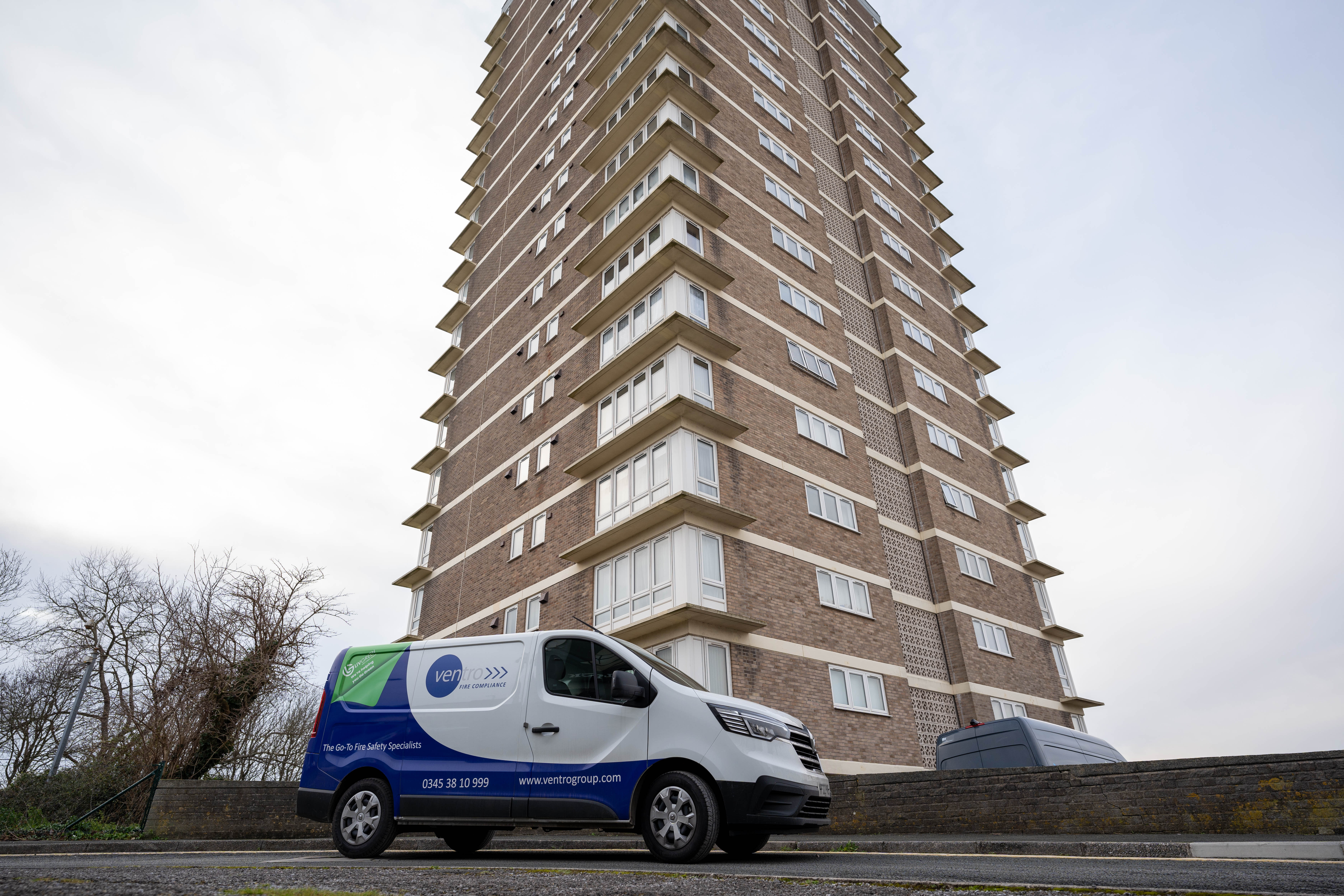We recently hosted the "Fire Safety Checklist 2025" webinar, where our experts shared practical tips on meeting the latest UK fire safety regulations. Aimed at property managers, landlords, and compliance officers, the session covered key updates, maintenance protocols, and real-world examples which ended with a live Q&A to address audience questions.
The webinar featured Paul Parkes from AF-X Fireblocker, who explained Aerosol Fire Suppression and its practical applications, including how Second-Generation Suppression Systems are transforming the industry. He also shared real-life case studies to illustrate their effectiveness. We also heard from Anthony Taylor of the Building Safety Alliance, who discussed Organisational Capability—what it means, when it's legally required, how organisations can develop it, and what the future may hold in this evolving area of building safety.
.png?width=214&height=300&name=Key%20Speaker%20Image%20Template%20RECTANGLE%20(2).png) Anthony Taylor
Anthony Taylor
Proprietor, Resolve Risk
Anthony has worked across both public and private sectors in the built environment, with a background in insurance and risk management. He chairs the Building Safety Alliance and sits on key industry bodies including the Industry Competence Committee and BSI’s CPB/1. Actively involved in health, safety, and fire committees, he focuses on raising sector-wide competence and is leading efforts to define and implement standards for Organisational Capability—helping organisations understand, evidence, and manage competence effectively.
Q1: How are smaller firms expected to demonstrate "organisational capability" without extensive HR or compliance resources?
Whatever the size of the organization, get hold of a copy of the HSE’s ‘Managing Competence for safety-related systems’ document which sets out the 15 Principals and work through them, gathering, and recording, the evidence that the organization can provide to show that it has a management system in place. To start, you need to be clear as to what services you sell, and where, and identifying all the legislation/contract obligations that are attached to those services. Then you’ll need to identify all the individual roles the organization needs to meet those obligations and then establish that the organization has, collectively, got access (in house or subcontracted) to individuals with the competences (SKEB) appropriate for the roles. Once this groundwork is in place there needs to be a management system in place to maintain and monitor that it is working, and continues to do so. It is not anticipated that organisations will immediately be able to put this in place overnight, however it is expected that working towards meeting the principles set out in the HSE guidance is underway.
Q2: With the emphasis on regular revalidation, how often is "regular" considered, and who sets the benchmark?
This would be determined by the complexity of the work – and the safety risks attendant. Ie: more time will need to be devoted to services (and the roles that support the delivery) that involve design/construction/installation etc of higher-risk elements. In considering the revalidation of the management system this would be determined by those who manage the system, again, more stringent re-validation of roles associated with higher-risk deliverables.
As this is a ‘management system’ it should be constantly subject to review and monitoring – and where fault lines are identified, they will need to be rectified. ‘Revalidation’ really applies to an individual’s competence to deliver their role – and this is the individuals’ responsibility (the Behaviour in SKEB) to maintain their competence, however whomsoever is responsible to manage the competence management system should retain oversight and ensure the collective competences across the organization match the competences necessary to deliver the services the organization is delivering.

Q3: For those new to the Building Safety Alliance standards, what are the practical first steps in implementing BSAS 01:2024?
As with any standard start with scoping what the organization does, and where it does it. Then establish what legal and contract obligations are associated with the service provided, and the competencies necessary to deliver against those obligations. Then establish the company structure to deliver the services, eg: what are the job titles (or rather roles), each role will require certain competences to deliver the role successfully. Then you need to match the individuals’ and their individual competences to the roles – and either supervise, or recruit where you have a role, or a function where there is inadequate competence available. The best answer is to download the Standard from the website and make a start. If you wish contact Anthony through Anthony.taylor@resolvegroup.co.uk. Note however, the standard will be revised and updated with publication anticipated late June/July 2025.
Q4: What strategies do you recommend for fostering a culture of continuous improvement in competence rather than just box-ticking?
Without being cliched about it, there is the absolute need for both senior and middle management to fully buy-into the concept. After all, the purpose of providing whatever services the organization is delivering is to provide a safe building, this is the primary focus, we also have to make some money while doing so. IF this attitude is prevalent there is half a chance that the workforce will follow, and if they believe the focus is truly on delivery of safe services the continuous improvement should come fairly naturally. It will need both ‘carrot’ and ‘stick’. Carrot in that ‘this is what we do, how we do it and why’. For example where things have gone wrong, or someone considers there may be non-compliance then the fact they bring this to the attention of management and do not face sanctions but their diligence and integrity is welcomed, (and the root cause of the problem is discovered and remediated,) this will bring confidence in the organization that it is, at its heart, wanting to do things ‘right’. On the other hand, if people are encouraged to ‘turn a blind eye’, or facilitated to cut corners, or are sanctioned for trying to do the right thing nothing will improve. Negligence, lack of attention to detail, or lack of integrity cannot be tolerated.
As noted in the question this is not a tick box exercise it is a hearts and mind attitude to bring a better quality to all that is done. If the culture is right, and ‘malfunctions’ of policy and procedures are addressed with openness and honesty continuous improvement will prevail.

For more information or further details can be directed to Anthony through his email at Anthony.taylor@resolvegroup.co.uk where he will endeavor to assist as is appropriate.
.png?width=214&height=300&name=Key%20Speaker%20Image%20Template%20RECTANGLE%20(4).png) Paul Parkes
Paul Parkes
Director, af-x fireblocker
Paul’s introduction to fire suppression began in motor racing, working with now-banned BCF systems (Halon 1301). This sparked a 30-year career in fire detection and suppression, spanning system design, installation, and equipment manufacturing. With deep expertise in detection technologies, wired and wireless communication, voice evacuation, and suppression systems, Paul brings a unique perspective on developing products that are cost-effective, easy to install, and simple to maintain.
Q1: Can you expand on the environmental testing that's been done on the Fireblocker Nano, particularly its long-term effects after discharge?
Tests performed April-2015 for AF-X International BV., in the Netherlands (prior to the product release) by and under supervision of Aerospace Propulsion Products BV (Safran Group S.A.), determined the residue left is composed of natural body chemicals that have no impact on people or the environment.
Q2: How does Fireblocker Nano compare in effectiveness and clean-up time with traditional gas suppression systems like FM200 or Novec 1230?
After an activation; FM200 has a global warning potential of 3500, Nano aerosol has Zero GWP. Removal of residue from an activation of Fireblocker Nano can be removed with an air extract system if applied within 20 minutes of aerosol release. Alternatively, residue can be removed with a standard vacuum cleaner (Henry, Nilfisk, Dyson) after aerosol has fallen to the lowest surface after 45 minutes.

Q3: You mentioned extended hold times for Lithium-Ion fires—can you share real-world performance data or case studies on this?
Fireblocker Nano is tested and certified to comply with Kiwa International Testing, Inspection and Certification Scheme K21045/02 for “Fire Protection Systems” and Specific Certification Program 05 for Fire Protection of Lithium-ion batteries storage. KIWA Certificate for Fireblocker Nano states tested for 90 minute hold time.
Q4: What considerations or limitations are there for retrofitting existing buildings with Fireblocker Nano systems?
The advantage of Fireblocker Nano is the simplicity of installation, there are almost no limitations to installation. For a basic Fireblocker Nano system, extinguishing generators are installed inside the room or risk space just below ceiling height, along with detection and sounders and a control panel and warming sounders wall mounted outside the room immediately adjacent to the entry door to the room.

Q5: While the product is non-toxic, are there any risks associated with residue during the clean-up process, especially in sensitive environments like data centers or museums?
Residue removal with Fireblocker Nano is low and can be achieved with a Henry or Nilfisk type vacuum cleaner. It is recommended to wear a face mask PP2 (COVID type mask) and gloves, the reason is that whilst Nano is nontoxic it is not advisable to breath any type of dust for a prolonged period of time. Copy of our detailed Post Activation Document can be requested from info@af-xfireblocker.co.uk
_____________
We’d like to extend our sincere thanks to each of our key speakers for their insights during the webinar.
Be sure to sign up for updates on our upcoming webinars here, and if you have any questions about the topics covered in this Q&A, feel free to reach out below. One of our fire safety consultants will be happy to assist you.


.jpg)

.jpg)


